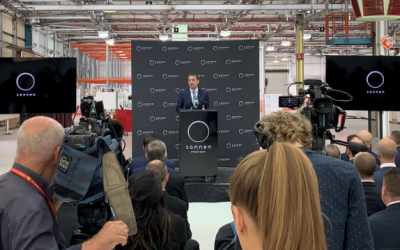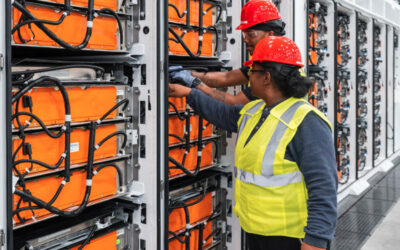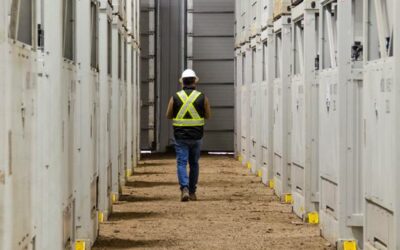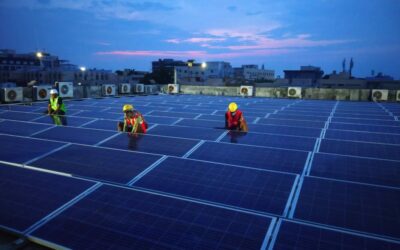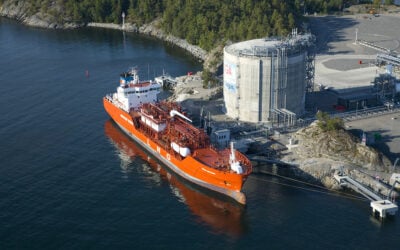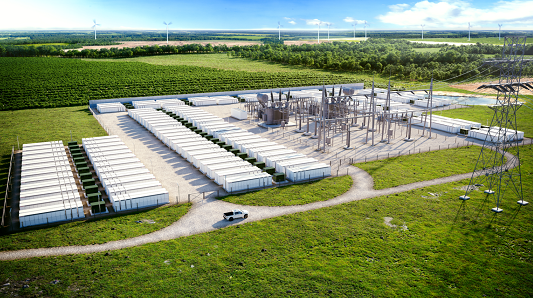
Multiple steps forward have been taken in Ontario in the development of Canada’s largest battery storage project to date.
The country’s federal government has agreed to put in CA$50 million (US$37.46 million) funding, a long-term contract has been signed with the grid operator and the power producer and developer behind the Oneida project in Ontario have brokered key agreements.
Enjoy 12 months of exclusive analysis
- Regular insight and analysis of the industry’s biggest developments
- In-depth interviews with the industry’s leading figures
- Annual digital subscription to the PV Tech Power journal
- Discounts on Solar Media’s portfolio of events, in-person and virtual
Or continue reading this article for free
Oneida will be a 250MW/1,000MWh battery energy storage system (BESS), built on land belonging to the First Nations community, Six Nations of the Grand River, in southwestern Ontario.
It is being co-developed in a joint venture (JV) between the Six Nations of the Grand River and energy storage developer NRSTor, which have been working together on it since 2019. It would be Canada’s biggest BESS by some distance and a rare example of a 4-hour duration asset in the country.
In early 2021, the project was being considered as a potential recipient of federal government funds through the national growth and economic recovery plan of the Canada Infrastructure Bank, as reported by Energy-Storage.news at the time.
Last week on 10 February, the provincial government of Ontario said it was working with the federal government to get the project built, leading with the federal government’s investment commitment, while noting that the Canada Infrastructure Bank is in discussions with project partners – including the NRSTor-Six Nations JV, independent power producer (IPP) Northland Power and EPC contractor Aecon – over a possible investment.
For the Ontario government’s part, it instructed the Ontario Independent System Operator (IESO), overseer of the grid network and wholesale energy markets, to enter a 20-year contract with the project development vehicle, called an Energy Storage Facility Agreement (ESFA).
The long-term contract offers some revenue certainty to the development consortium, allowing the BESS to be used by the province to charge with surplus baseload and renewable energy from the grid during off-peak times and output it again during peaks when most needed.
It will also be used to deliver grid-balancing ancillary services, such as frequency regulation.
Tesla battery supply agreement
NRSTor said the finalisation of the ESFA meant the project partners were able to complete a battery supply agreement with Tesla for BESS equipment, as well as its contract with EPC Aecon, also announcing that IPP Northland Power had recently come on board to the vehicle as an equity and operating partner.
The federal funding will come from Natural Resources Canada, via the government department’s Smart Renewables and Electrification Pathways Program. The eight-year, CA$1.5 billion scheme helps fund energy generation, storage and grid modernisation projects with direct greenhouse gas (GHG) emissions reduction benefits.
Oneida Energy Storage Project is scheduled for commissioning in 2025. When it goes online, it will more than double Ontario’s existing installed base of battery storage from 225MW output to 475MW.
That said, the province is set for some major energy storage developments within a couple of years after that date: the Ontario government last October ordered for between 1,500MW and 2,500MW of energy storage to be procured, along with 1,500MW of natural gas generation.
At present, Ontario is able to meet its requirements for electricity fairly comfortably, including during peaks. However, population growth and other factors like electrification of transport mean demand is projected to grow rapidly in the next few years.
The ordered procurements are in line with recommendations by the IESO on how to bridge that gap, and resources are expected to be in place and online by 2027.
Trade association Energy Storage Canada has published studies that show the country needs between 8GW and 13GW of storage on the grid by 2035 to support a fully zero-emissions electricity sector by that time, and then a fully decarbonised economy by 2050.
A more recent report by think tank Clean Energy Canada then demonstrated that renewable energy with energy storage is cost-competitive with natural gas generation in both Ontario and Alberta.
One other big picture news development likely to impact the sector in a positive way is that the federal government has said it will introduce tax incentives similar to those recently implemented in the US through the Inflation Reduction Act (IRA) for clean energy investments.

